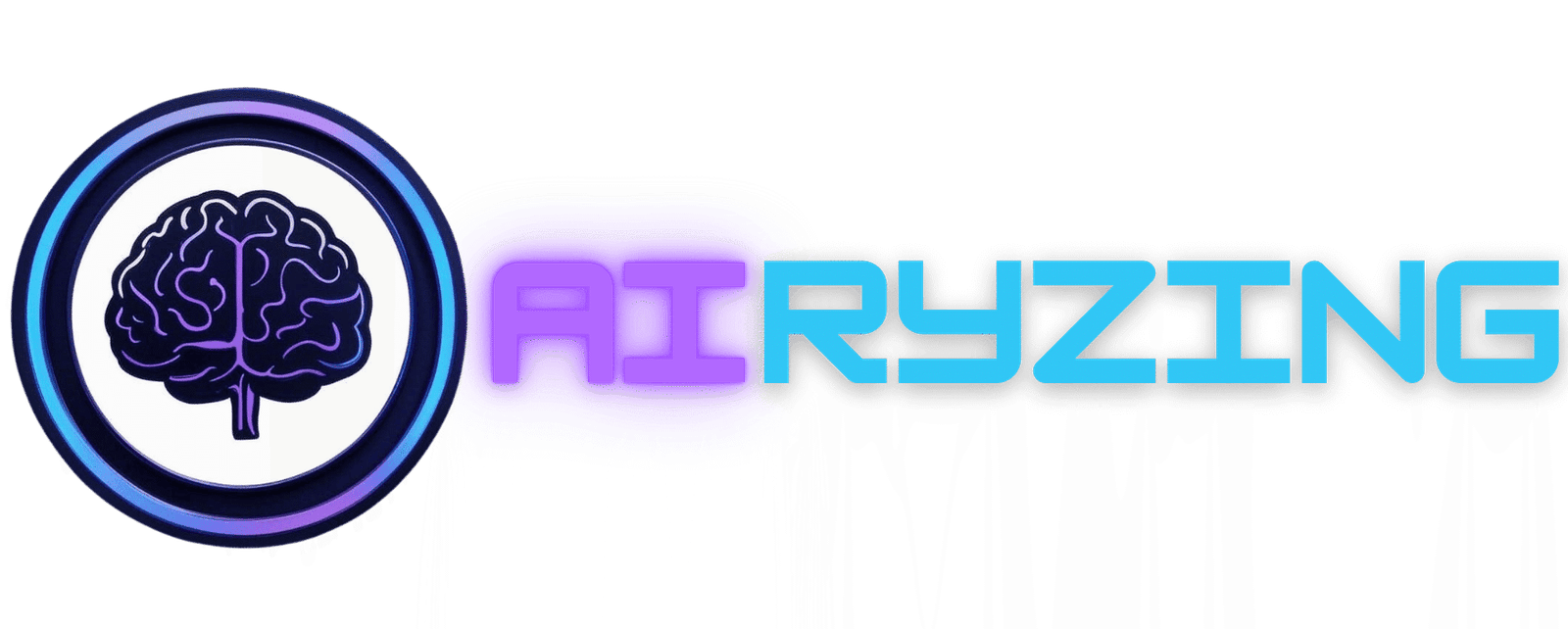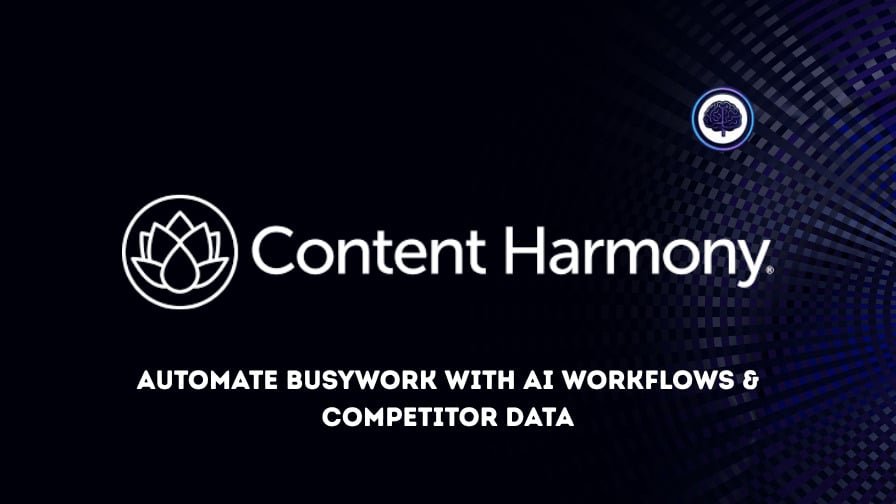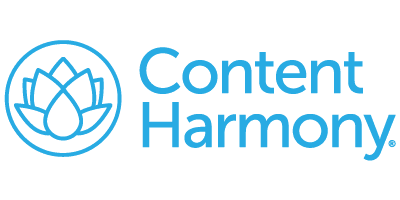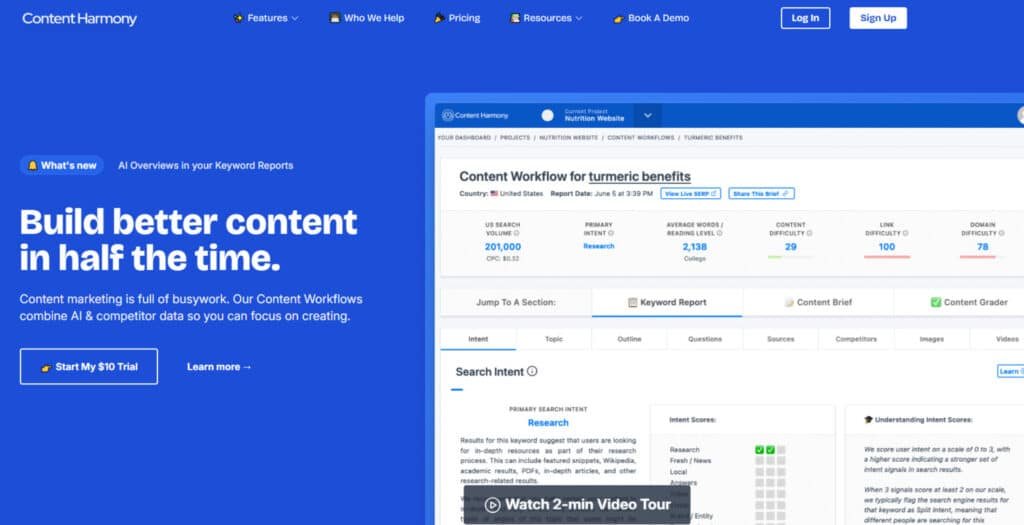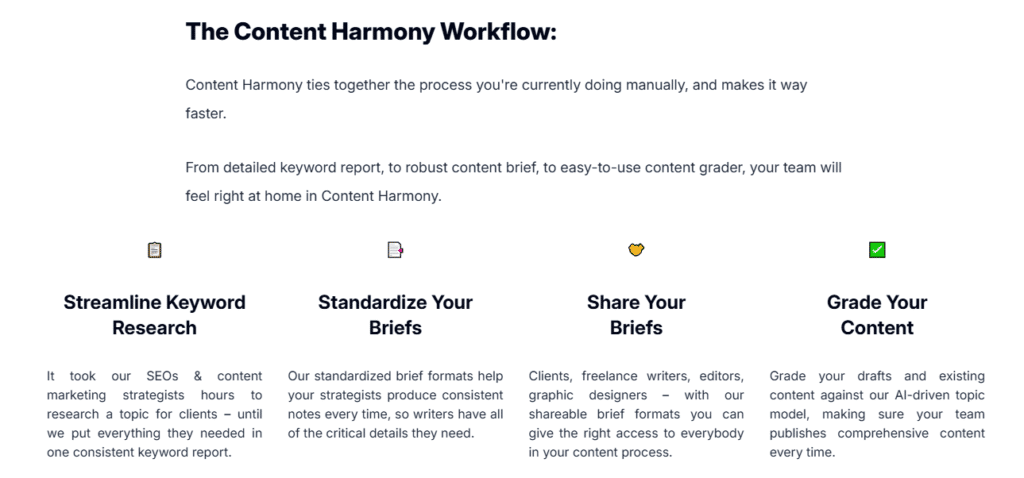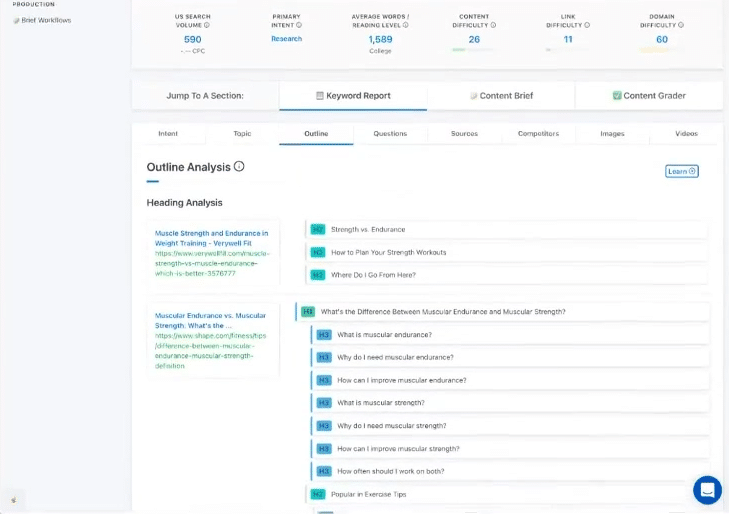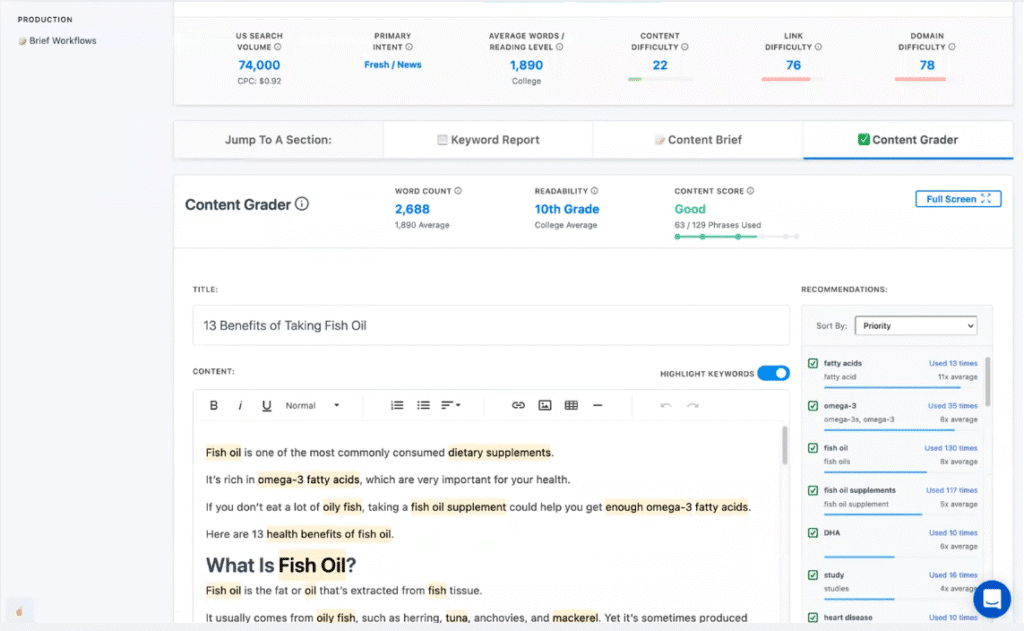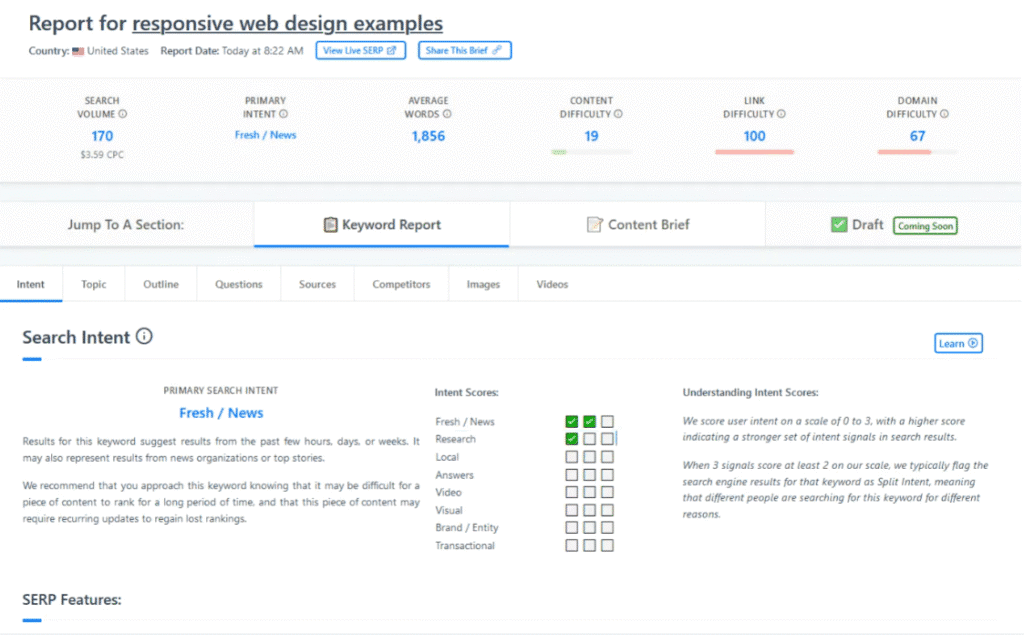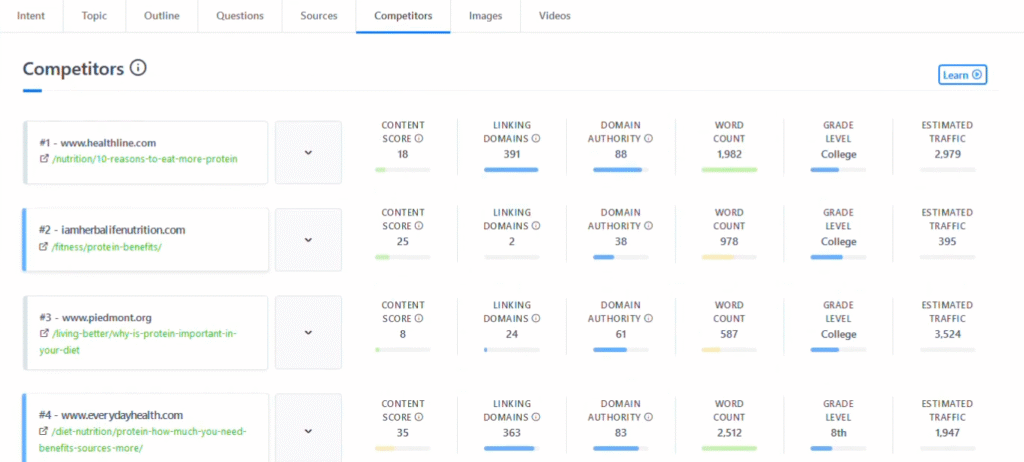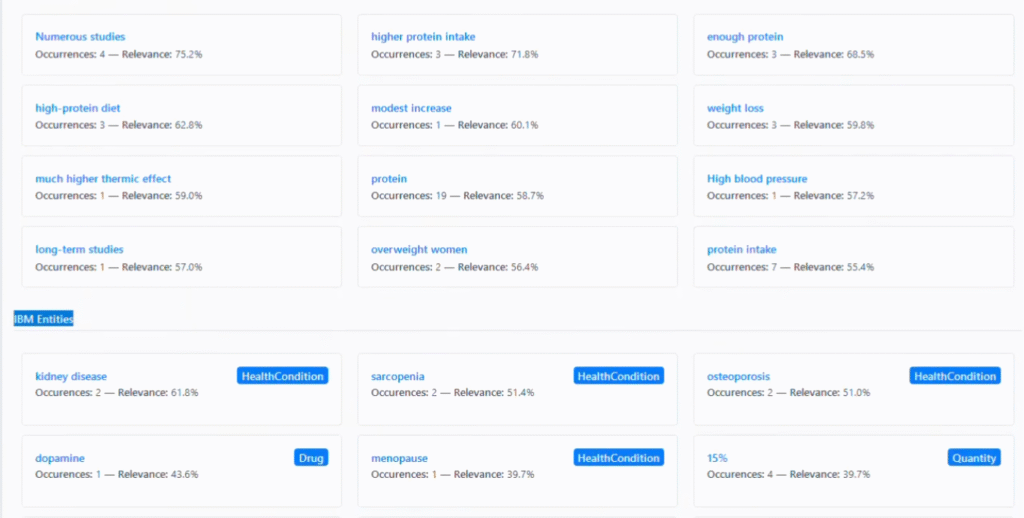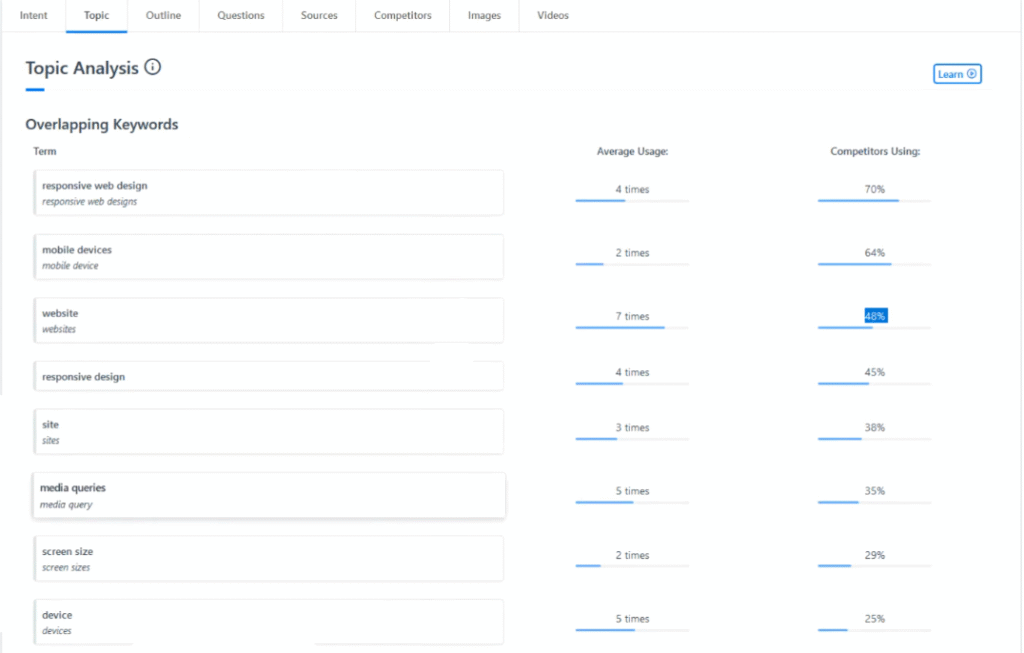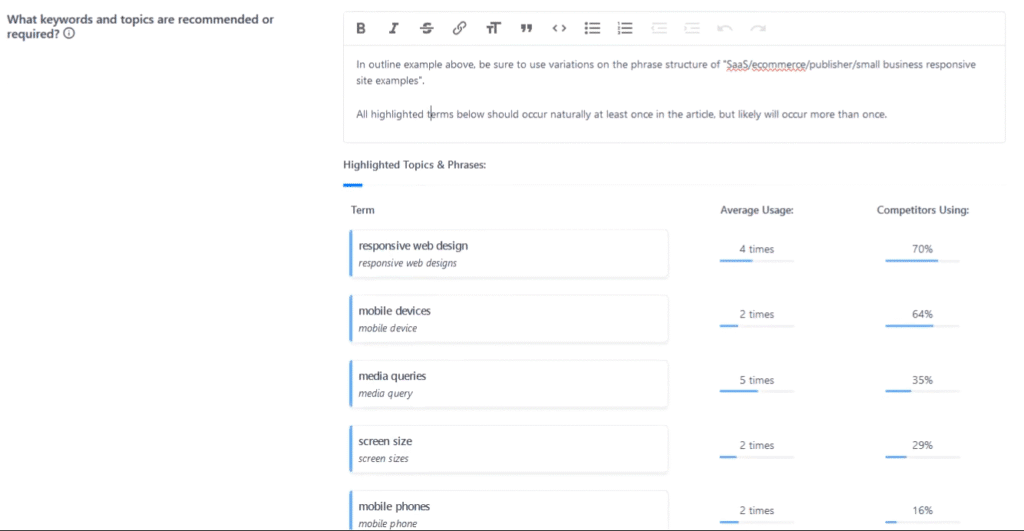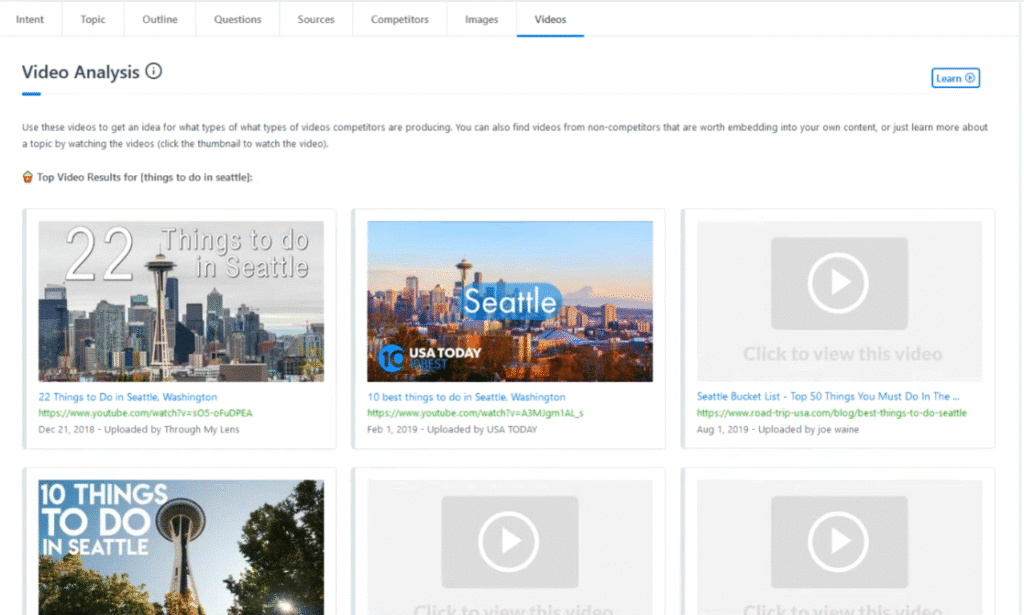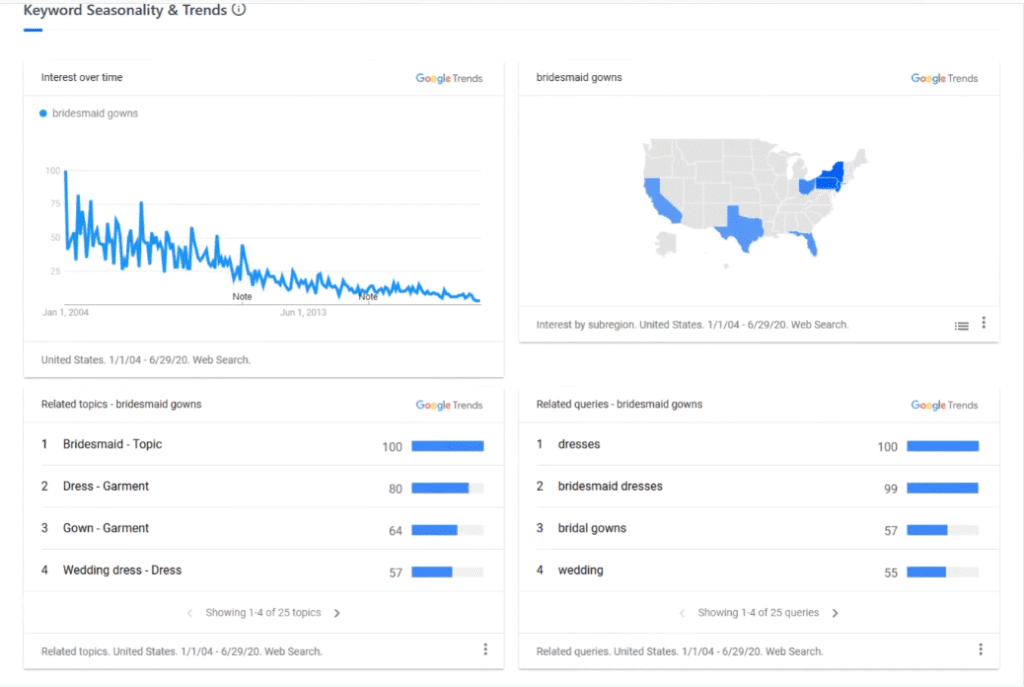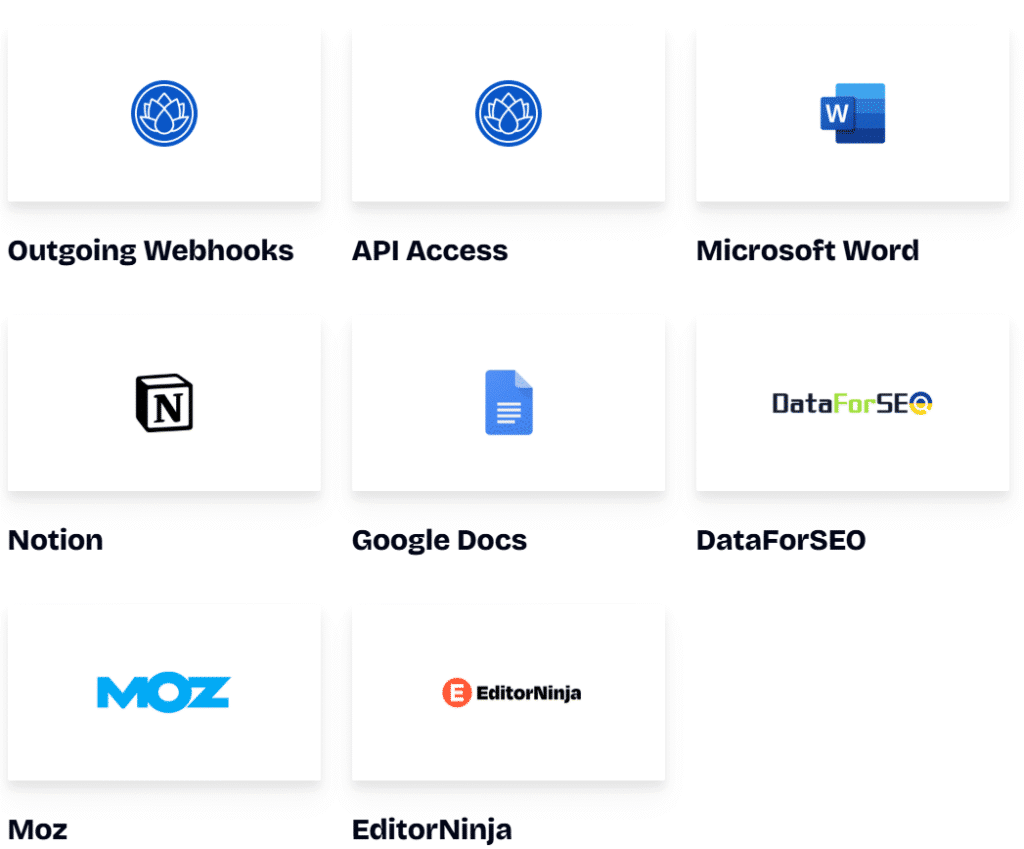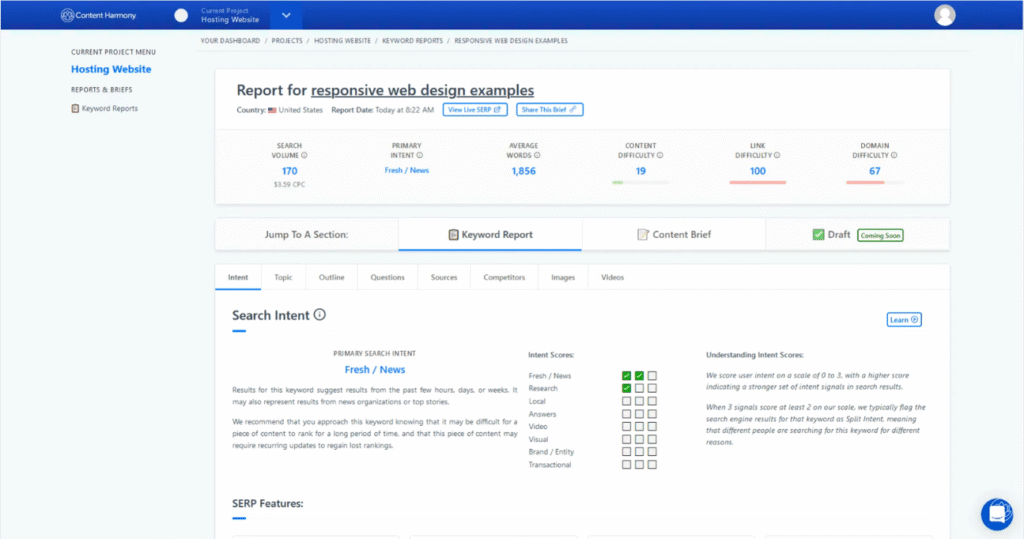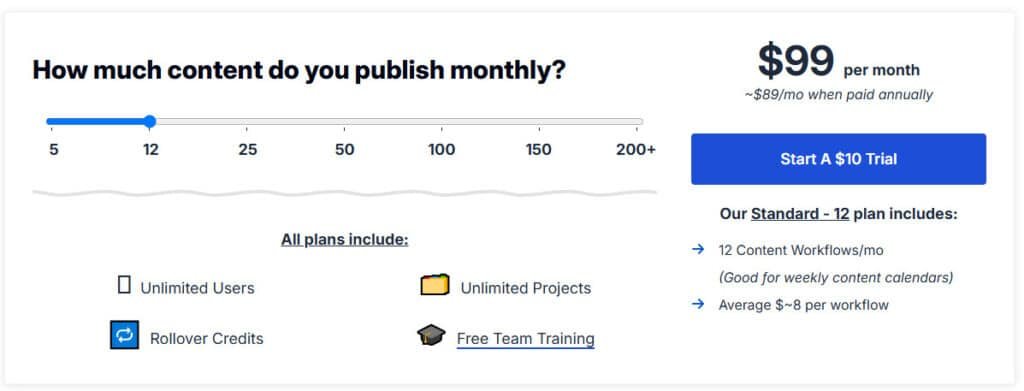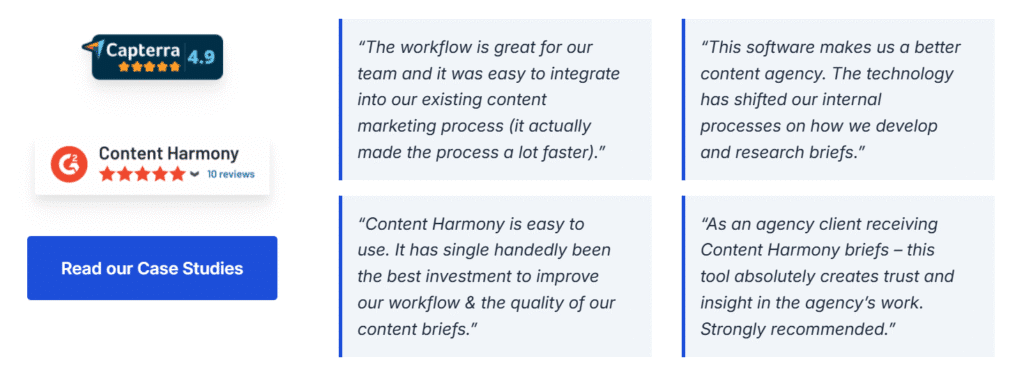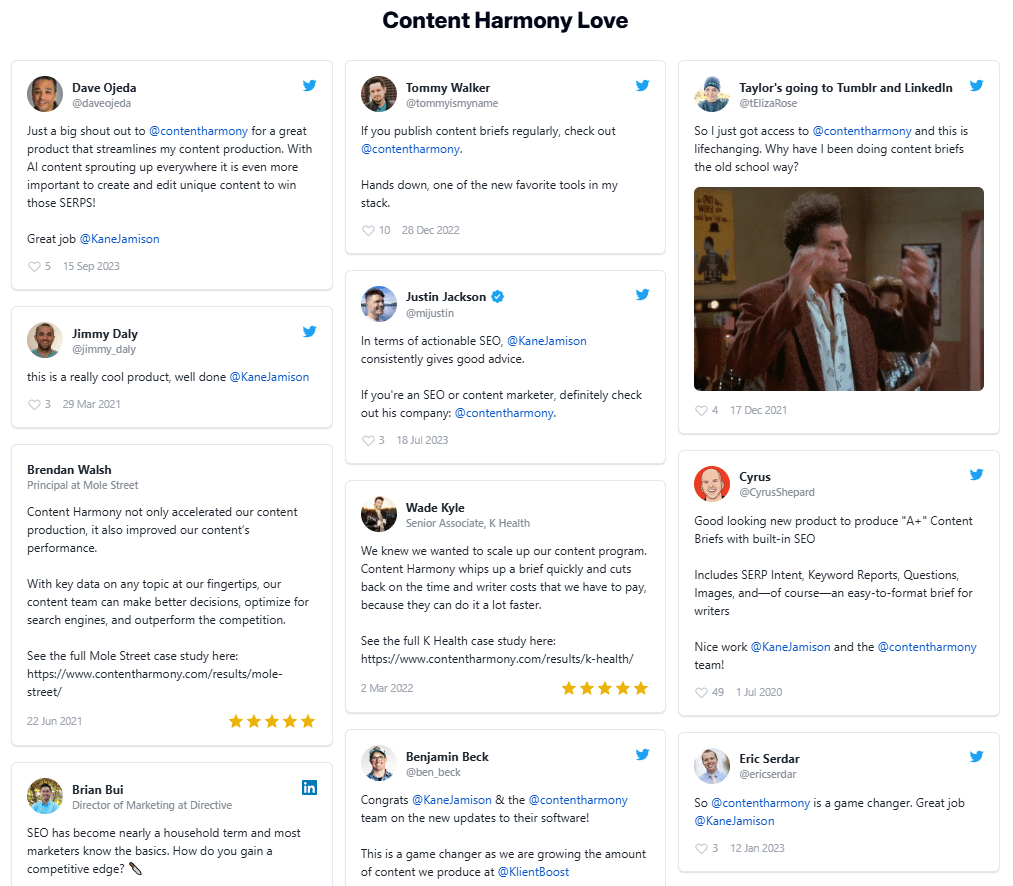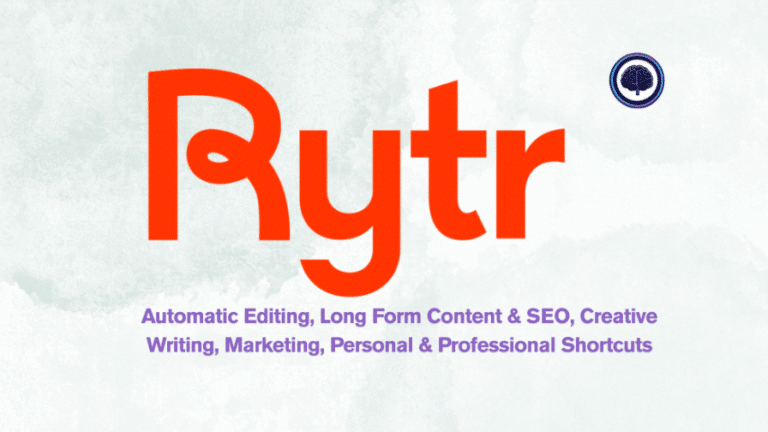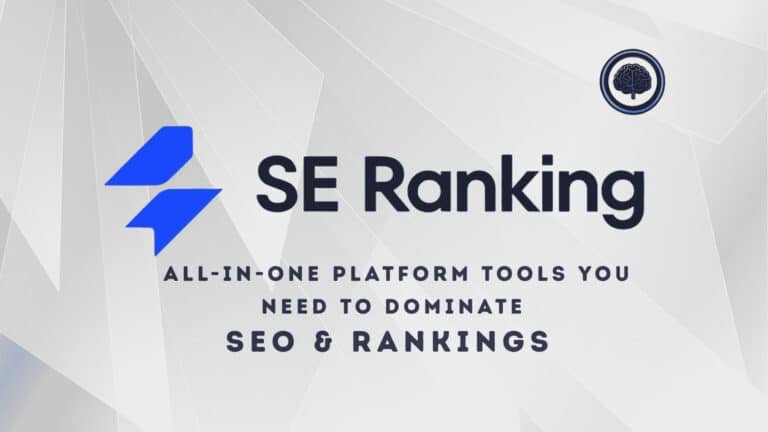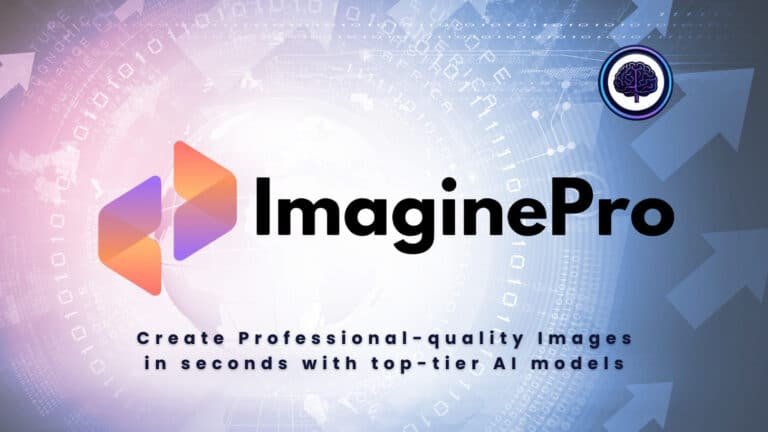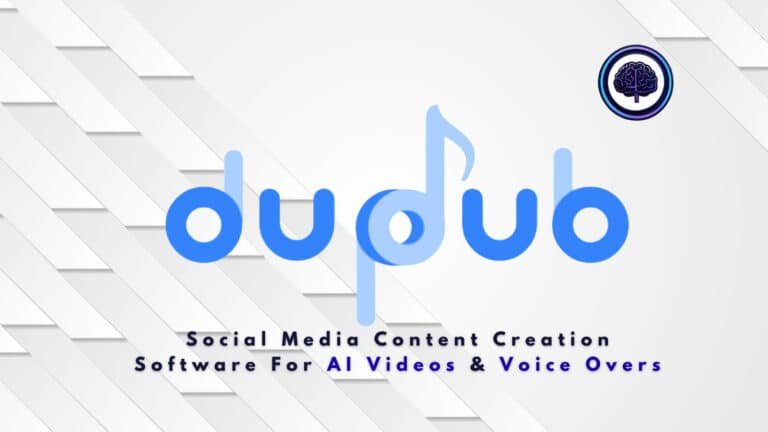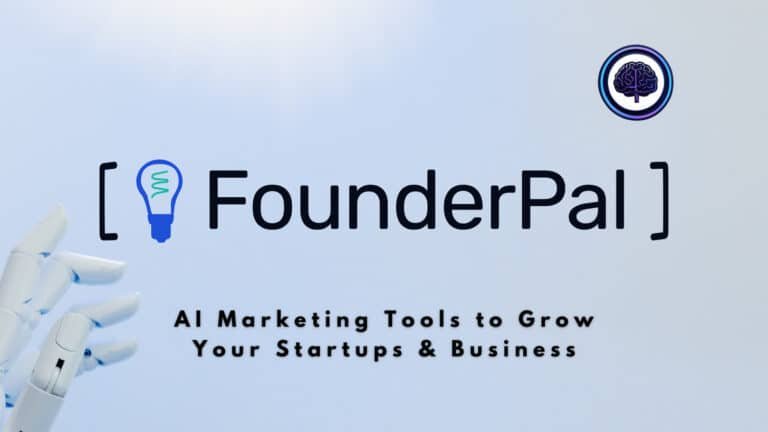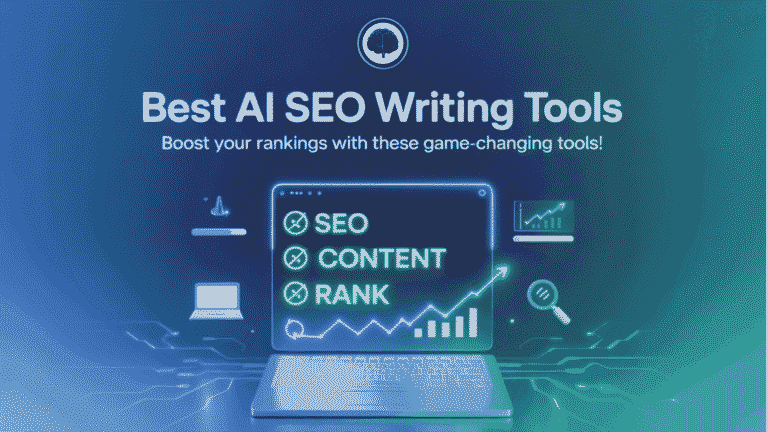I’ve spent months using Content Harmony to optimize my content workflows, and the results have been game-changing.
This tool isn’t just another marketing promise—it delivers measurable improvements in how I create and manage SEO-driven material.
In today’s competitive SEO landscape, streamlining your content creation process is essential.
Content Harmony helps you cut through the noise with features like keyword research and a content grader that ensures every piece performs at its best.
In this Content Harmony Review, I’ll share my first-hand experience and highlight why this tool stands out for it’s content workflow creation capabilities.
Read on as I dive into its features, functionality, pricing, and alternatives in the upcoming sections.
Overview
Raamish’s Take
Content Harmony streamlines your content creation with its data-driven content briefs.
You get detailed keyword reports and competitor analysis to craft content that ranks well.
The content grader evaluates your drafts, ensuring they align with SEO goals and user intent.
Its workflow cuts research time significantly, letting you focus on writing.
The visual content planner helps organize publishing schedules, while the topic discovery tool suggests high-value ideas tailored to your niche.
You can create optimized blog posts, landing pages, or marketing copy with clear, actionable insights accumulated with real-time web search.
Content Harmony has an intuitive design makes it easy to produce high-performance content that resonates with your audience and boosts organic traffic.
Introduction to Content Harmony
From the start, Content Harmony stood out as a game-changer for my workflow.
It’s not just another tool—it’s a solution that bridges the gap between SEO strategy and execution.
If you’ve ever faced the dreaded “blank page problem,” you’ll appreciate how it provides structured briefs to guide your writing.
One of its standout features is its ability to analyze top-ranking pages to determine search intent.
This ensures your material aligns with what users are actually looking for. By focusing on user needs, it helps you create content that performs, not just fills space.
In my experience, Content Harmony has been invaluable for aligning client goals with actual user intent.
It’s evolved from a simple keyword tool into a complete workflow solution, making it a must-have for anyone serious about content marketing.
Whether you’re a seasoned pro or just starting out, this platform simplifies the process while delivering measurable results.
It’s not just about creating material—it’s about creating material that works and ranks.
What is Content Harmony?
When I first discovered Content Harmony, it immediately caught my attention. Founded by Kane Jamison in 2015, it started as a simple keyword research tool.
Today, it’s evolved into a comprehensive solution for content creation, helping creators streamline their workflows and deliver measurable results.
Founding and Vision
Kane Jamison, a seasoned expert in content strategy, built Content Harmony with a clear vision: to simplify content marketing.
His goal was to democratize data-driven content creation, making it accessible to everyone, from beginners to seasoned professionals.
Back in 2015, the platform focused on keyword research. Fast forward to now, and it’s transformed into a powerhouse for harmony content.
It now offers features like content briefs, SEO analysis, and performance tracking, ensuring every piece aligns with user intent.
One of its standout qualities is how it helps creators “speak the language” of their target audience.
By analyzing top-performing pages, it ensures your material resonates with what users are actually searching for. This focus on audience needs has been a game-changer for me.
The platform’s growth reflects the rising demand for SEO-optimized material.
As more businesses recognize the value of data-driven strategies, tools like this have become essential. It’s not just about creating material—it’s about creating material that works.
Key Features of Content Harmony
Let’s dive into the features, content creators, marketers, and SEO specialists need to know about Content Harmony.
This powerful tool streamlines your content workflow, blending AI, data, and practical solutions to boost your search rankings and efficiency.
We’ll explore every key feature, from keyword reports to the new app design, and show how they help you succeed in a competitive search landscape.
Efficiency and precision are at the core of this tool’s design. It’s packed with features that simplify the content accumulation workflow.
1. Keyword Reports
Content Harmony’s keyword reports kickstart your process with robust research. It pulls nearly 100 API calls per report, analyzing search engine results pages (SERPs) to uncover what ranks.
You get insights into search intent, overlapping keywords, and related entities—fast. This saves hours of manual digging, giving you clear data to craft content that aligns with what Google values.
For anyone aiming to rank higher, this feature delivers the foundation to target the right terms and formats effectively.
2. Content Briefs
A standout in the content workflow, the content brief tool creates detailed, standardized guides in minutes.
It uses research from keyword reports to build AI-generated outlines, showing competitor heading structures (H1s, H2s, etc.) so you can cherry-pick the best.
The customizable block editor lets you add tables, checklists, and notes, tailoring each content brief to your needs.
Shareable URLs make passing these to writers or clients a breeze, while new brief templates speed up recurring tasks.
This ensures your team gets clear, consistent direction, slashing prep time and boosting output quality for search success.
Read more about Content Briefs.
3. Content Grader
Once your draft’s ready, the content grader steps in to refine it.
Paste your text or a URL, and this AI-driven tool checks it against a topic model, recommending missing keywords, sub-topics, or entities. It also provides readability scores, comparing your work to top-ranking pages.
For readers with search intent, this means you’ll use content that’s comprehensive and optimized, increasing your odds of ranking well.
It’s a quick, reliable way to polish drafts, ensuring they hit the mark for both users and algorithms.
Read more about Content Grader.
4. Search Intent
The Search intent tool dives deep into why users search, offering a detailed breakdown of intent types (e.g., informational, transactional) based on SERP analysis.
It scores intent on a 0-3 scale, showing which formats Google favors, like videos or articles.
For readers optimizing content, this provides clear data to shape strategies, ensuring your content workflow hits the mark for user needs.
Read more about Search Intent.
5. Intent Blog Post
The Intent Blog post feature lets you craft blog posts tailored to specific user intents, using Content Harmony’s advanced intent classification system.
It analyzes search intent to suggest formats like how-to guides or listicles, ensuring your content matches what readers seek.
This helps you create targeted, engaging posts that align with search trends, boosting visibility and relevance.
Read more about Intent Blog Post.
6. AI-Driven Suggestions
Content Harmony’s AI shines here, offering suggestions to elevate your content workflow.
It generates questions, suggestions and keywords to address, pulled from competitor analysis, so you cover what readers want.
It also suggests images to pair with your text and proposes headings for a solid, SEO-friendly outline.
This helps you create engaging, well-rounded content that answers questions and keeps users hooked.
For anyone chasing search visibility, these tools fill gaps fast, making your pages more competitive and user-focused.
7. Topic Analysis and Topic Model
The Topic Analysis tab in Content Harmony’s Keyword Reports is a powerful tool for understanding what makes content rank. It highlights overlapping keywords from top competitors, showing how often and by how many they’re used.
For example, a query like “responsive web design examples” reveals that 70% of competitors use the phrase, averaging four times per page.
This helps writers include essential terms naturally, ensuring relevance to Google’s expectations. You can also mark critical phrases—like “mobile devices” or “media queries”—to guide content creation, with these highlights transferring to the Content Brief for clarity.
The Topic Model, built on this data, takes it further by powering the Content Grader.
It assesses drafts against competitor patterns, identifying missing sub-topics or keywords to boost optimization.
The Also Ranked For keywords, shows additional terms competitors rank for, expanding your content’s reach.
Together, these features streamline research, enhance SEO, and support individuals in crafting comprehensive, rank-ready content with ease.
8. Visual and Video Content Insights
Modern search results demand more than text, and Content Harmony delivers.
Its visual content detection scans competitors to reveal the images Google expects—think infographics or product shots.
The video intent analysis highlights when videos matter, even letting you watch top-ranking ones in-app for inspiration.
This feature helps you build multimedia-rich content that grabs attention and aligns with current search trends.
Readers benefit from a better experience, and you’re more likely to rank in diverse, visual-heavy SERPs.
8. Content Difficulty Metrics
Understanding keyword challenges is key, and Content Harmony breaks it down clearly. It offers content difficulty to gauge ranking ease, link difficulty for backlink needs, and domain difficulty to size up competing domains.
For those planning a content workflow, this clarity guides strategy—pick winnable battles or prep for tougher fights.
You’ll craft smarter plans, focusing efforts where results are achievable, helping your content climb search rankings efficiently.
9. Project and Team Support
Managing multiple assets?
Content Harmony acts like a project hub with unlimited users and projects. Set up client-specific or type-based projects, and use comments in briefs for seamless feedback.
This support feature scales for agencies, freelancers, or in-house teams, keeping everyone aligned.
It streamlines collaboration, speeds up delivery, and ensures quality, helping you meet deadlines and satisfy search-driven goals with ease.
Check out Content Harmony Agency Page.
10. Integrations and Exports
Flexibility matters, and Content Harmony integrates smoothly. Request writers via WordAgents to grade drafts in-app, or export briefs to Google Docs, Microsoft Word, MOZ, or Notion.
For developers, the API access is also available to for integration to external app.
New global features support international projects, too.
This adaptability fits any process, letting you refine and share content fast. For readers seeking efficiency, this means less hassle and more focus on creating top-tier, search-optimized results.
11. Onboarding and Support
New to the tool?
Free training and demo options (with 10 free workflow credits) get you started fast.
Top-notch support ensures you’re never stuck. This helps you master Content Harmony quickly, turning your content marketing vision into reality with confidence and speed.
Content Harmony’s features tackle every step, delivering a robust content workflow to win at search. From research to support, it’s built to help you shine.
Pros and Cons of Content Harmony
User Experience with Content Harmony
Navigating the platform felt intuitive from the very first login. The ease use of the interface makes it accessible for both beginners and seasoned professionals.
Whether you’re working solo or with teams, the logical workflow structure ensures a smooth process.
Interface and Navigation
The dashboard layout is clean and well-organized.
Key features like the Content Brief generator and Keyword Reports are just a click away.
This simplicity reduces the learning curve, allowing you to focus on creating high-quality material.
Here are three tips for new users:
- Explore the tutorial videos for a quick start.
- Customize your dashboard to prioritize frequently used tools.
- Use the mobile app for on-the-go access.
Comparing the mobile and desktop experiences, I found both to be equally efficient. The mobile app is perfect for quick edits, while the desktop version offers more detailed analytics.
Team Collaboration
Collaborating with teams is seamless, thanks to features like version control and team permissions.
These tools eliminate confusion and ensure everyone is on the same page. In my experience, they reduced email threads by 80%.
The platform also allows you to assign tasks and track progress. This streamlined process has been a game-changer for my workflow.
It’s not just about creating material—it’s about doing it efficiently and effectively.
Content Harmony Pricing
Content Harmony offers a flexible pricing structure tailored to different content needs, with clear tiers and a low-risk trial option.
Let’s break down each plan based on the screenshot, covering monthly and annual rates, and the features included. This will help you decide which fits your content workflow best.
$10 Trial
Starts at $10 as a one-time payment for trial.
Annual cost isn’t applicable since it’s a single purchase. It grants 10 credits valued at $80, each covering a full content workflow including keyword report, content brief, and content grader.
There’s no time limit on the trial, and no automatic billing after signup. Ideal for testing the tool to answer your questions about its fit for your needs.
Perfect for new users to explore without commitment, offering a cost-effective entry to assess value.
Standard – Content Plan (Content can increase)
Monthly cost is $99 per month. Annual cost drops to $89 per month when paid annually, saving $120 yearly.
It includes 12 content workflows per month, good for weekly content calendars, with an average cost of $8 per workflow.
The content workflows being acquired can be scaled up to 200+ with pricing scaling up accordingly.
All plans come with unlimited users, unlimited projects, rollover credits, and free team training. Each content workflow includes a keyword report, content brief, and content grader—everything needed to research and optimize one page.
Suited for small teams or individuals publishing 5-12 pieces monthly, with flexibility to save via annual billing and roll over unused credits.
Scaling Plans (Custom)
Monthly cost starts above $99, varying based on volume such as 25, 50, 100, 150, or 200+ pieces monthly. Annual cost features custom pricing, likely discounted per month similar to the Standard plan.
It scales content workflow capacity to match your output. Retains all base features: unlimited users, unlimited projects, rollover credits, and free team training.
Each content workflow still includes keyword report, content brief, and content grader. Ideal for agencies or large teams with high content demands, offering scalability while keeping core tools intact.
Content Harmony Alternatives
Let’s explore the top competitors for Content Harmony, a tool celebrated for enhancing the content creation process, boosting SEO optimization, and fostering team collaboration.
We’re spotlighting tools that align with its core strengths, offering a variety of options to meet your needs.
| Feature | Content Harmony | MarketMuse | Clearscope | Outranking | Scalenut |
|---|---|---|---|---|---|
| Content Creation Process | Detailed briefs and workflow tools | AI-driven strategy and briefs | NLP-optimized briefs | AI briefs and SEO audits | AI briefs and drafting |
| SEO Optimization | Keyword reports, search intent | Topical authority analysis | Competitor insights, NLP | Keyword research, audits | Keyword tools |
| Team Collaboration | Unlimited users, shareable briefs | Team workflow support | Limited team features | Collaboration tools | Basic team support |
| NLP Editing | Basic NLP in briefs | Advanced NLP for quality | Strong NLP optimization | Moderate NLP editing | AI-driven tone suggestions |
| Pricing (Starting) | $10 trial, $99/month | $149/month | $119/month | $29/month | $17/month |
| Best For | Content strategists, Content creators | Content strategists, teams | SEO-focused teams | Balanced teams | Content creators, small teams |
MarketMuse
MarketMuse shines in content strategy and team collaboration, using AI to assess topical authority and deliver detailed briefs with competitive gaps.
While it’s a strong choice for strategic planning, Content Harmony adds a layer of ease with its intuitive workflow, making it a go-to for teams who value simplicity alongside depth.
Clearscope
Clearscope excels in SEO optimization with NLP-powered briefs and competitor insights, much like Content Harmony’s SERP analysis.
However, Content Harmony stands out by offering a seamless content creation process that integrates grading and collaboration, giving teams a more rounded experience.
Outranking
Outranking blends AI-driven briefs with SEO optimization audits, aligning with Content Harmony’s research focus.
Its collaboration tools are solid, but Content Harmony enhances this with unlimited user access and shareable briefs, providing a more flexible solution for larger teams.
Scalenut
Scalenut competes with Content Harmony’s research phase using AI-powered briefs and keyword tools, with its Cruise Mode speeding up drafting.
While handy, Content Harmony offers a more comprehensive approach, balancing research, optimization, and team workflows for consistent, high-quality results.
The competitors, MarketMuse, Clearscope, Outranking, and Scalenut—offer valuable features, but Content Harmony quietly sets itself apart with its all-in-one approach.
Its blend of detailed briefs, robust SEO optimization, and effortless team collaboration makes it a reliable choice, especially for agencies and large teams.
With a starting price that includes a $10 trial, it’s easy to see why it’s worth considering for your content creation process.
Content Harmony: Real-World Use Cases
In my experience, seeing real-world results has always been the best way to evaluate a tool’s effectiveness.
Let’s dive into two compelling case studies that highlight how Content Harmony can transform your search performance and workflow efficiency.
Content Harmony boasts a strong 4.9 rating on platforms like Capterra and G2, reflecting its high user satisfaction.
It’s used by SEO specialists for keyword reports and search intent, content marketers for content briefs and content grading, and agencies for team collaboration and scalable workflows.
1. Content Marketing for Businesses
Content Harmony helps businesses build strong content marketing plans. Its keyword reports and content briefs use data to create content that grabs attention.
This is perfect for companies wanting more traffic and conversions.
2. SEO Optimization
SEO pros love Content Harmony for its search intent and keyword reports. These tools analyze what ranks, helping you craft content that hits the mark. The content grader ensures your work covers all bases, increasing search visibility.
3. Team Collaboration
Got a team?
Content Harmony offers unlimited users and projects, plus free team training. Agencies and in-house teams can share content briefs easily, keeping everyone aligned. This cuts coordination time, letting you focus on creating great content.
4. Content Brief Creation
Creating content briefs is a breeze. The tool automates detailed guides, saving 50-80% of prep time. Writers get clear instructions, ensuring consistency across blogs, articles, or other formats. It’s like having a content strategist on speed dial.
5. Content Grading
The content grader checks drafts against top-ranking pages, flagging gaps in keywords or topics. This ensures your content is thorough and ready for search success. It’s a quick way to polish your work before publishing.
6. Multimedia Content
Content Harmony’s visual and video content insights help you add the right images or videos. Since 44% of users engage more with visuals (2016 data), this feature makes your content pop and rank better.
7. Scalable Content Production
From small startups to big agencies, Content Harmony scales with plans for 5 to 200+ pieces. Content difficulty metrics help you pick winnable topics, streamlining your content workflow for high output.
8. Diverse Content Types
Beyond blogs, Content Harmony supports product pages, whitepapers, and more. The intent blog post feature tailors content to user needs, ensuring relevance across formats. This versatility sets it apart from blogging-only tools.
Ultimately, Content Harmony caters to a diverse audience, enabling solo freelancers to streamline their content workflows, generating sharable content briefs, empowering marketing professionals to optimize SEO strategies, and supporting collaborative teams in managing multi-client projects with ease.
Its adaptable features make it an essential tool for solopreneurs and teams tackling varied content challenges.
Final Verdict: Content Harmony Review
Raamish’s Take
Content Harmony streamlines your content creation with its data-driven content briefs.
You get detailed keyword reports and competitor analysis to craft content that ranks well.
The content grader evaluates your drafts, ensuring they align with SEO goals and user intent.
Its workflow cuts research time significantly, letting you focus on writing.
The visual content planner helps organize publishing schedules, while the topic discovery tool suggests high-value ideas tailored to your niche.
You can create optimized blog posts, landing pages, or marketing copy with clear, actionable insights accumulated with real-time web search.
Content Harmony has an intuitive design makes it easy to produce high-performance content that resonates with your audience and boosts organic traffic.
After evaluating Content Harmony, it’s evident this tool is a valuable asset for content creators and marketers. Rated at 9.4 out of 10, it distinguishes itself with a robust set of features that enhance your content workflow.
The keyword reports and search intent tools stand out, providing in-depth research into user preferences, supported by reliable data.
The intent blog post feature builds on this, tailoring content to specific needs with smart format suggestions, ensuring relevance and engagement.
The content briefs and content grader are key strengths, offering detailed guides and instant feedback to refine your work. AI-driven suggestions, including image and heading ideas, add efficiency and creativity.
The visual and video content insights further elevate posts with multimedia, aligning with current trends.
For teams, unlimited users and projects, combined with support like free training, streamline collaboration.
The new app design improves usability, while integrations and exports integrate seamlessly with existing tools. The content difficulty metrics also guide strategic decisions, helping you focus on achievable topics.
With a $10 trial providing 10 credits and plans starting at $99/month (or $89/month annually), it’s both accessible and powerful. Minor improvements in speed or integrations could be considered, but the overall benefits are significant.
Content Harmony proves to be a strong, all-in-one solution for improving content quality and efficiency.
Conclusion
After thoroughly testing Content Harmony, I can confidently say it’s a game-changer for serious teams.
From my experience I can safety say that it lives up to it’s promise and simplifies content workflows such as providing accurate content briefs and matching the search intent while delivering measurable results.
If you’re looking to streamline your process, Content Harmony should be at top of your consideration list.
When deciding if it’s right for you, consider your team size, budget, and volume of material. For small teams, agencies and enterprises, it’s a must-have.
Smaller teams can start with the trial and scale as needed.
Here’s my final recommendation: if you’re serious about improving efficiency and coherence of your content, Content Harmony is a top choice.
Start with 10 briefs for $10 and see the difference it makes in your workflow.
Frequently Asked Questions
1. What makes Content Harmony stand out in the content marketing space?
It excels with its data-driven insights and content briefs that streamline the creation process. The platform focuses on search intent and keyword research, ensuring high-quality content that resonates with your target audience.
2. How does the content grader feature work?
The content grader analyzes your drafts against SEO best practices and keyword reports. It provides actionable feedback to improve content quality and align with search intent, making it easier to create better content.
3. Is Content Harmony suitable for small teams?
Yes, its team collaboration features and ease of use make it ideal for small teams. The platform simplifies content workflows, saving time and ensuring consistency across projects.
4. How does it compare to tools like Surfer or Neuronwriter?
While Surfer and Neuronwriter focus on SEO analysis, Content Harmony emphasizes content briefs and workflow optimization. It’s a more holistic tool for creating content that aligns with marketing goals.
5. What are the pricing options?
It offers flexible plan options based on your needs, from individual users to large teams. Each plan provides value for money with features like keyword research and content grading.
6. Can it help improve SEO rankings?
Absolutely. By focusing on search intent and data-driven insights, it helps you craft high-quality content that boosts SEO rankings and drives organic traffic.
7. Does it support team collaboration?
Yes, it includes features like shared content briefs and workflow management, making it easy for teams to collaborate efficiently and stay aligned on marketing goals.
